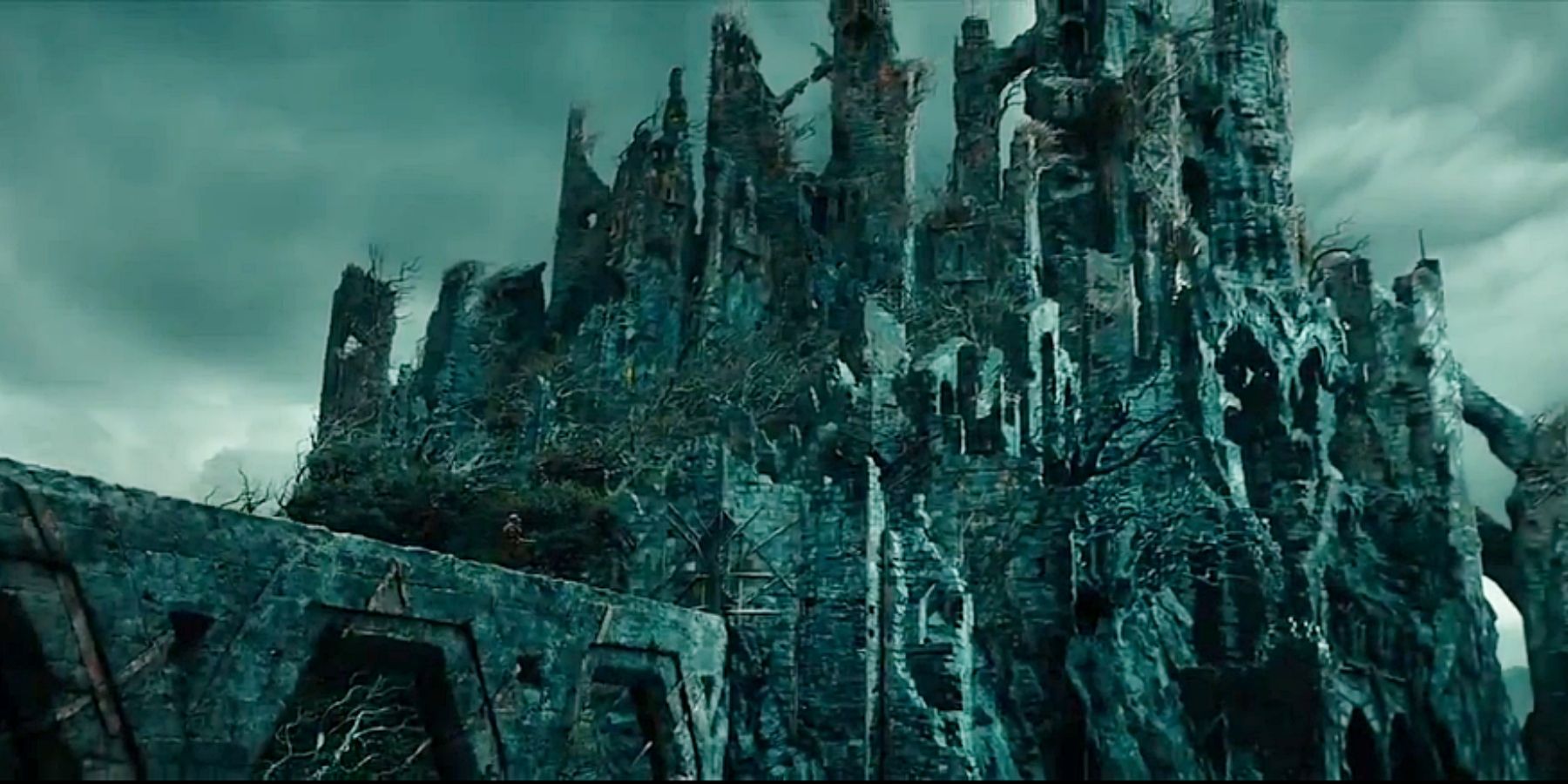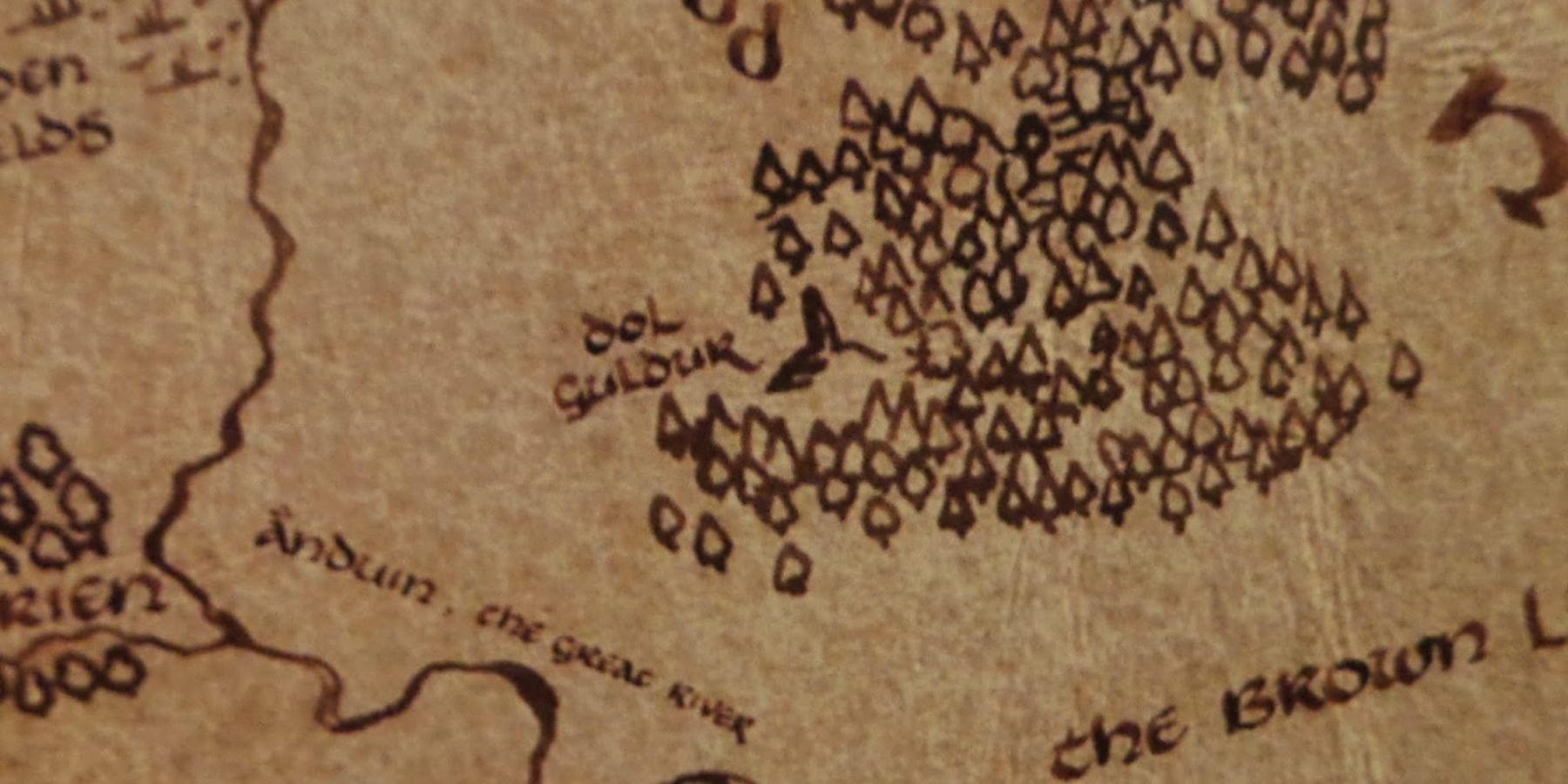There are many dark and shadowy places associated with the Lord of the Rings. Of course, Mordor is the most famous one after Frodo and Sam traverse these dramatic and malevolent lands to take the ring to Mount Doom and destroy it. But arguably, The Hobbit trilogy may have topped it, with a whole range of cruel and uninviting places featured. Such settings range from the High-fells, where Gandalf and Radagast explore the tombs of Angmar; to the tower in Gundebad, where a horde of flying bats are seen erupting like a disease towards Ravenhill. This is also where the company of dwarves are ambushed and the Battle of the Five Armies takes place.
Undoubtedly, the most deathly place featured in Peter Jackson’s Hobbit trilogy is Dol Guldur, the place where the White Council finally come face to face with the dreaded Necromancer, and must rely on Galadriel’s strength to banish him. This place is dangerous for many reasons, namely because of the evil power and magic of Sauron that resides there, and because of the nine Ringwraiths who lie in wait to attack unwitting travelers. But there is another reason that this place is a terrible threat to those who aim to impede Sauron’s rise back to physical being and control: its location.
Many may think that this is because of its proximity to both Lothlorien, Galadriel’s woodland realm where she later helps the fellowship and gives them precious gifts to aid them on their quest, and because of its proximity to Mirkwood, where Thranduil and his elves protect the surrounding lands. But although these two things make the placement of Dol Guldur seem very precarious and foreboding, they are not the reason that Sauron chose it as his stronghold. That has to do with a much larger part of the history of Middle Earth, and Sauron's own personal journey through war and defeat at the hands of the Last Alliance, which is briefly touched upon in the prologue of Peter Jackson's film adaptation of the Fellowship of the Ring.
The epic battle, where Isildur first cut the ring off Sauron’s hand and Sauron was taken down by Gil-galad and Elendil, took place in the Dead Marshes, which is North of the fortress of Dol Guldur. Rather than destroying the ring as he should have, Isildur took it for himself. He attempted to make the journey back through the Gladden Fields to his own kingdom, with the dangerous object on a chain around his neck. Unfortunately, a ring like that, with so much allure and raw power, brings unwanted attention, and Isildur was shot in the Gladden Fields as he tries to escape into the River Gladden.
It is believed by some that despite Peter Jackson’s depiction of Isildur as a greedy, power-hungry king who wanted to absorb the rings power to champion himself and his kingdom, that he might have actually been on the way to Rivendell, to present the ring to Elrond. As Elrond was himself a keeper of an elven ring of power, Isildur may have been on the way to seek his guidance on where to hide the ring until it could be destroyed. Unfortunately, even if this were his plan, it was never to be. Isildur was shot with three arrows and the ring was lost, carried down stream into the unwitting hands of Gollum, who, in the famous scene, strangles his cousin Deagol to gain possession of it.
However, this information is not learned by either the dark lord or by the members of the fellowship until many years later. So, the last known place that Sauron has knowledge on the one ring is around the Gladden area. Many believe that this is why he decided to infest the Dol Guldor stronghold with his malice. This is why he chose it as the base from which to try to regain power, and to start manifesting his evil plans to resurrect the Ringwraiths, seize control of Middle Earth, and rid it of all life and beauty.
By the time Gandalf and Radagast realize the true dark potential of the Necromancer, and who he actually is beneath the rumor and the mystery, he has already started seeking the ring, which he believes to be in the Gladden Fields nearby. If he were to find it, there would be no stopping him, which makes his position in Dol Guldur one of the most alarming developments since his defeat. This is why it is incredibly important that he is sent away from there, but he flees instead to Mordor. It is in Mordor that he abides for the War of the Ring 60 years later. He would have achieved his dastardly mission, had it not been for the loyal fellowship defending their homes and their loved ones.






.jpg)